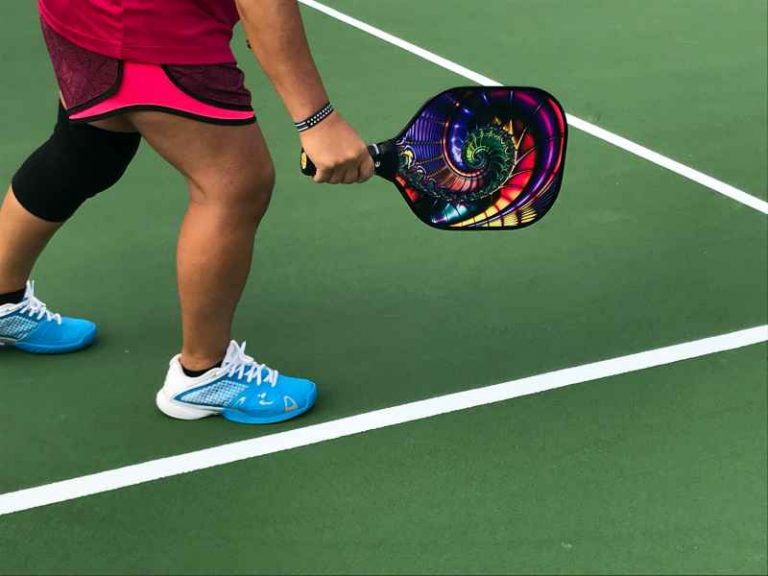Best Men’s Walking Shoes for Diabetics
When managing diabetes, foot care isn’t optional it’s essential. That’s where the best men’s walking shoes for diabetics come in. Designed to minimize pressure points, encourage circulation, and protect sensitive feet, these shoes can help prevent complications like ulcers or neuropathy-related injuries.
In this guide, we’ve reviewed and handpicked top-rated shoes that combine comfort, support, and diabetic-friendly features. From orthotic insoles to breathable uppers, each pair brings something unique to the table. Let’s walk through our top picks.
Best Men’s Walking Shoes for Diabetics
1. Orthofeet Edgewater Stretch Knit
The Orthofeet Edgewater is a diabetic-friendly shoe built for maximum comfort and support. Its stretch knit upper gently conforms to the foot, making it perfect for men with bunions, hammertoes, or swelling. Inside, the orthotic insole offers anatomical arch support that aligns the foot and relieves pressure across key zones.
This shoe excels in pressure distribution, which is key for those with diabetic neuropathy. The interior has extra foam padding and a seamless lining, drastically reducing friction that can lead to blisters or sores. The wide toe box is another win, providing room without sacrificing stability.
The cushioning system absorbs shock impressively, giving you a cloud-like walking experience even on hard surfaces. Plus, the rocker sole helps promote a natural gait, which is critical for people with balance issues or altered stride patterns due to diabetes.
Not only is the Edgewater comfortable, but it also looks good. The knit upper offers a modern, sneaker-like look, making it a solid pick for both casual and semi-active wear.
Pros
- Excellent arch and heel support
- Stretch upper adapts to swelling
- Rocker sole eases walking motion
Cons
- Runs slightly large
- Not ideal for wet conditions
2. Dr. Comfort Winner-X
The Dr. Comfort Winner-X is engineered for those with severe foot conditions, including diabetic neuropathy and edema. This extra-depth shoe provides ample room for custom orthotics and swollen feet, without compromising support. The leather upper is durable yet soft, preventing irritation on sensitive skin.
One standout feature is the protective toe box, which guards against accidental bumps and injuries. The lightweight sole includes built-in arch support and shock absorption, helping reduce joint strain during long walks. It’s a practical choice for everyday use, especially for those who are on their feet often.
Dr. Comfort includes gel inserts for additional padding a thoughtful touch that makes walking feel easier. The double hook-and-loop closure system also makes it incredibly easy to put on and take off, especially for those with limited mobility.
While it leans more toward functionality than style, it still looks neat and professional. It’s a go-to option for men who prioritize foot protection and comfort above all else.
Pros
- Extra-depth design accommodates swelling
- Protective toe box prevents injury
- Simple Velcro closure for easy use
Cons
- Bulky profile
- Limited color options
3. Propet Stability X Strap
The Propet Stability X Strap is all about support and easy adjustability, making it ideal for diabetics who struggle with foot shape changes or swelling. It comes with Medicare-approved features like extra depth and a removable footbed, which allows room for custom orthotics.
This model includes a reinforced heel counter for added stability, which can be a game-changer for men with balance issues or a history of foot injuries. The EVA midsole gives cushioned support while staying lightweight, keeping fatigue at bay on longer walks.
Breathability is also excellent thanks to its mesh-and-leather upper, which promotes airflow without sacrificing structure. The hook-and-loop strap adds convenience and lets you easily get a snug or looser fit depending on your foot condition that day.
Visually, it’s understated but clean. Great for casual daily wear and versatile enough to use in light fitness routines or errands.
Pros
- Medicare-approved diabetic shoe
- Secure and adjustable Velcro strap
- Breathable mesh upper
Cons
- Slight break-in period needed
- Not suitable for formal occasions
4. New Balance 928v3
The New Balance 928v3 brings athletic performance into the diabetic shoe game. With motion control and ROLLBAR stability tech, it helps correct overpronation and keeps your stride steady. This is especially beneficial for diabetics with foot fatigue or gait issues.
Its plush footbed and dual-density collar offer next-level cushioning, making it ideal for daily walking or extended standing. The leather upper offers durability and structure, while the rubber outsole provides excellent traction on a variety of surfaces.
The 928v3 also accommodates custom inserts, giving you the flexibility to adjust based on your needs. It comes in wide and extra-wide sizes, offering enough room to reduce friction and pressure hotspots that diabetics often battle.
This shoe’s design blends performance and clean aesthetics, so you won’t feel like you’re wearing a medical shoe even though it very much functions like one.
Pros
- Strong stability features
- Roomy fit with width options
- Excellent cushioning and shock absorption
Cons
- Heavier than most walking shoes
- Leather upper limits breathability
5. Apex Lace Walker (Men’s V Last)
The Apex Lace Walker uses biomechanics to bring comfort and protection to diabetic feet. Its V-Last design offers a straight-last fit that’s excellent for those with flat feet or needing extra rearfoot stability. The shoe’s firm heel counter and multiple removable layers let you personalize the fit for custom orthotics or swelling.
The insole is made with moisture-wicking materials and antimicrobial lining, both crucial for preventing skin breakdown or fungal infections in diabetics. The midsole is EVA foam, offering a balance of cushion and durability, with minimal compression over time.
It’s particularly well-suited for men who walk frequently or have long commutes on foot. The stability features help reduce fatigue and minimize risk of falls or missteps, which can lead to complications in diabetic patients.
Style-wise, the Apex Lace Walker plays it safe, but that’s expected in the diabetic category. It’s a no-nonsense workhorse that prioritizes foot health.
Pros
- Removable depth layers for fit customization
- Great heel and arch stability
- Moisture-wicking interior
Cons
- Style may feel outdated
- Laces may be tricky for limited dexterity
6. Hush Puppies Gil
The Hush Puppies Gil strikes a rare balance between diabetic comfort and stylish casual wear. Its hook-and-loop closure makes it a practical option for men with limited dexterity or foot swelling, and the padded collar and tongue reduce pressure on sensitive areas. It’s designed with a zero-friction lining that minimizes blister risk.
Inside, it features a removable, contoured footbed with built-in arch support, making it ideal for those who need orthotic compatibility. The lightweight outsole provides shock absorption and flexibility, allowing a smoother stride without putting stress on pressure points.
The shoe’s upper is crafted from soft leather that molds to the foot while maintaining breathability. Whether you’re heading out for a walk or a casual outing, this shoe blends in without looking orthopedic making it one of the most discreet diabetic-friendly shoes out there.
For men who want to avoid the “medical shoe” look but still need essential diabetic features, the Gil delivers comfort without compromise.
Pros
- Easy hook-and-loop closure
- Lightweight and flexible outsole
- Removable cushioned footbed
Cons
- Less suitable for high-impact walking
- May not fit very wide feet
7. Skechers GOwalk Arch Fit
Skechers brings its signature comfort to the diabetic-friendly category with the GOwalk Arch Fit. Endorsed by podiatrists, it includes an insole system developed from 20 years of data and 120,000 unweighted foot scans. The result is excellent arch support with a plush step-in feel.
The shoe’s breathable mesh upper accommodates minor swelling and keeps things ventilated for all-day freshness. Its slip-on style is ideal for those who have trouble bending or tying laces. The outsole uses lightweight ULTRA GO cushioning for added shock absorption on each step.
While not officially labeled as a diabetic shoe, its ergonomic support and comfort make it a viable option for mild to moderate diabetic foot concerns. It’s especially useful for active men or those wanting a sporty, modern aesthetic in a medical-friendly shoe.
The flexible construction and arch contouring add to the feeling of natural motion, which can make a huge difference if you’re walking multiple miles a day.
Pros
- Slip-on design for convenience
- Excellent arch support
- Breathable and lightweight
Cons
- Not ideal for severe foot issues
- Less structured heel support
8. Dunham 8000 Mid Boot
The Dunham 8000 Mid Boot is a rare find: a rugged walking boot that doesn’t skimp on diabetic-friendly features. With extra width options, waterproof leather upper, and ROLLBAR motion control, it’s a heavy-duty option for men with diabetes who still want to stay active outdoors.
It includes a removable molded EVA and memory foam footbed that conforms to the foot, distributing pressure evenly to avoid hot spots. The reinforced midsole offers stability and support, particularly beneficial for those with neuropathy or plantar fasciitis on top of diabetic symptoms.
Despite its boot build, it remains surprisingly lightweight and well-ventilated. The padded collar and tongue reduce friction, and the wide toe box gives toes space to spread without rubbing. Plus, its waterproof seam-sealed construction adds confidence in wet conditions.
Perfect for hiking trails or long walks on uneven terrain, this is the go-to choice for diabetics with a bit of an adventurous streak.
Pros
- Waterproof and rugged for outdoor use
- Rollbar technology for motion control
- Wide toe box and padded collar
Cons
- Not ideal for hot climates
- Chunkier than other options
9. Brooks Addiction Walker 2
The Brooks Addiction Walker 2 is built with stability and support in mind, earning praise from both runners and those with medical foot needs. Its Extended Progressive Diagonal Rollbar (PDRB) keeps the foot aligned during motion, which is crucial for diabetics prone to gait abnormalities.
The BioMoGo DNA cushioning adapts to your stride, providing consistent comfort across varied surfaces. The upper is made from full-grain leather that adds durability while still allowing a bit of breathability. The slip-resistant outsole is another big win, helping prevent falls a common concern with diabetic neuropathy.
Inside, the cushioning system helps relieve pressure on the heel and forefoot, which can reduce ulcer risk for sensitive feet. It also comes in multiple widths, including extra-wide, and has enough interior depth to fit custom orthotics.
Whether you’re walking for exercise or simply need all-day comfort for daily errands, the Addiction Walker 2 has the cushion and control to support diabetic foot health.
Pros
- Stability-enhancing PDRB system
- Slip-resistant rubber outsole
- Custom orthotic-friendly
Cons
- Leather may get warm in hot weather
- Break-in period required
10. Xelero Matrix One
The Xelero Matrix One is often recommended by podiatrists for its advanced motion control and cushioning technologies. The design minimizes foot strain and enhances propulsion, which is valuable for diabetics dealing with fatigue or foot muscle weakness.
It features a patented Xelero Propulsion element, which assists natural foot movement while reducing overexertion. The cushioning system, which includes a soft internal lining and dual-density midsole, ensures minimal pressure on sensitive foot zones.
The shoe also includes an extra-depth design and removable insoles, making it suitable for orthotics and custom diabetic inserts. The mesh upper keeps things cool while maintaining structural support, and the heel counter locks the foot in securely to reduce slippage.
Though it’s priced at the higher end, its performance and protection make it worth considering for those needing serious support and relief from diabetic foot stress.
Pros
- Propulsion system eases walking
- Soft lining reduces pressure spots
- Custom orthotic-ready
Cons
- Higher price point
- Limited availability in stores
| Product Name | Key Feature | Best For | Closure Type | Orthotic Friendly |
|---|---|---|---|---|
| Orthofeet Edgewater | Stretch knit upper | Neuropathy & swelling | Lace-up | Yes |
| Dr. Comfort Winner-X | Extra depth design | Severe swelling | Velcro | Yes |
| Propet Stability X Strap | Mesh/leather hybrid | Daily walking | Velcro | Yes |
| New Balance 928v3 | ROLLBAR stability | Overpronation | Lace-up | Yes |
| Apex Lace Walker | Removable layers | Flat feet | Lace-up | Yes |
| Hush Puppies Gil | Low-profile design | Casual wear | Velcro | Yes |
| Skechers GOwalk Arch Fit | Slip-on with arch fit | Light walking | Slip-on | Yes |
| Dunham 8000 Mid Boot | Waterproof boot | Outdoor walking | Lace-up | Yes |
| Brooks Addiction Walker 2 | Slip-resistant sole | Stability & control | Lace-up | Yes |
| Xelero Matrix One | Motion control tech | Fatigue relief | Lace-up | Yes |
Best Men’s Walking Shoes for Diabetics: Buying Guide
Why Diabetic Footwear Matters
Diabetic feet require shoes that reduce pressure, minimize friction, and encourage circulation. Without these features, there’s a higher risk of developing ulcers, blisters, and infections. A proper walking shoe not only offers comfort but serves as a first line of defense in daily diabetic foot care.
Key Features to Look For
Look for extra depth, removable insoles, wide toe boxes, and seamless interiors. These features help accommodate swelling, reduce pressure points, and prevent friction that could lead to wounds. Also, prioritize shoes with good arch support and shock absorption to distribute weight evenly and protect the heel and ball of the foot.
Importance of Fit and Adjustability
A good diabetic shoe should never be tight. Adjustable closures like Velcro or stretchy uppers are ideal, especially when feet swell throughout the day. Multiple width options also matter shoes that come in wide or extra-wide prevent unnecessary pressure on nerves and skin.
Materials and Breathability
Mesh uppers and moisture-wicking linings keep feet dry and cool. This helps prevent fungal infections, a common concern among diabetics. Leather can offer structure but tends to trap heat, so balance is key depending on your climate and how much you walk.
When to Replace Your Shoes
Even the best shoes wear out. Worn soles, compressed midsoles, or frayed interiors can all introduce risk. Diabetics should inspect their shoes regularly and replace them at signs of uneven wear, loss of support, or foot discomfort. Most walking shoes need replacing every 6–12 months with regular use.
Getting Medical Input
Always consult with a podiatrist or specialist before switching footwear, especially if you have ulcers, neuropathy, or custom orthotics. They may recommend specific features or brands based on your foot shape, medical history, and mobility level.
FAQ
Can I use regular walking shoes if I have diabetes?
You can, but it’s risky. Regular shoes might lack critical features like extra depth, pressure distribution, and soft linings. These gaps increase the chance of irritation, blisters, or ulcers. Diabetic walking shoes are designed specifically to prevent those complications, especially if you have neuropathy or circulation issues.
How do I know if a shoe is diabetic-approved?
Look for Medicare approval (code A5500), which indicates the shoe meets medical-grade standards for diabetic use. You can also check if the shoe has extra depth, a wide toe box, and removable insoles. Brands like Orthofeet, Dr. Comfort, and Apex specialize in diabetic footwear and usually meet these benchmarks.
Are custom orthotics necessary with diabetic shoes?
Not always. Many diabetic shoes come with high-quality insoles designed to offer support out of the box. However, if you have unique foot issues like overpronation, high arches, or previous ulcers, your doctor may recommend custom orthotics for added protection and alignment.
Do diabetic shoes help with neuropathy?
Yes, especially those with cushioning and motion control. Neuropathy dulls pain, which makes it harder to detect injury. Diabetic shoes help reduce that risk by absorbing shock, protecting the toes, and minimizing friction. The goal is to prevent injury before it happens.
Should I choose Velcro or lace-up shoes?
It depends on your dexterity and foot shape. Velcro is easier for those with arthritis or swelling, offering fast adjustability. Lace-ups provide a snugger, more customizable fit, which is helpful if you’re walking longer distances. Some people alternate depending on their daily needs.
Can diabetic shoes be stylish?
Absolutely, though they may lean toward function over fashion. Many brands now offer modern designs that don’t scream “medical shoe.” Look for low-profile designs, neutral colors, and materials like knit or leather blends to maintain a versatile look without sacrificing foot protection.
Verdict
Choosing the best men’s walking shoes for diabetics isn’t about looks it’s about prevention, comfort, and support. The right pair can reduce your risk of injury, make daily movement easier, and help you stay active with peace of mind. Invest in your feet; they carry everything else.







